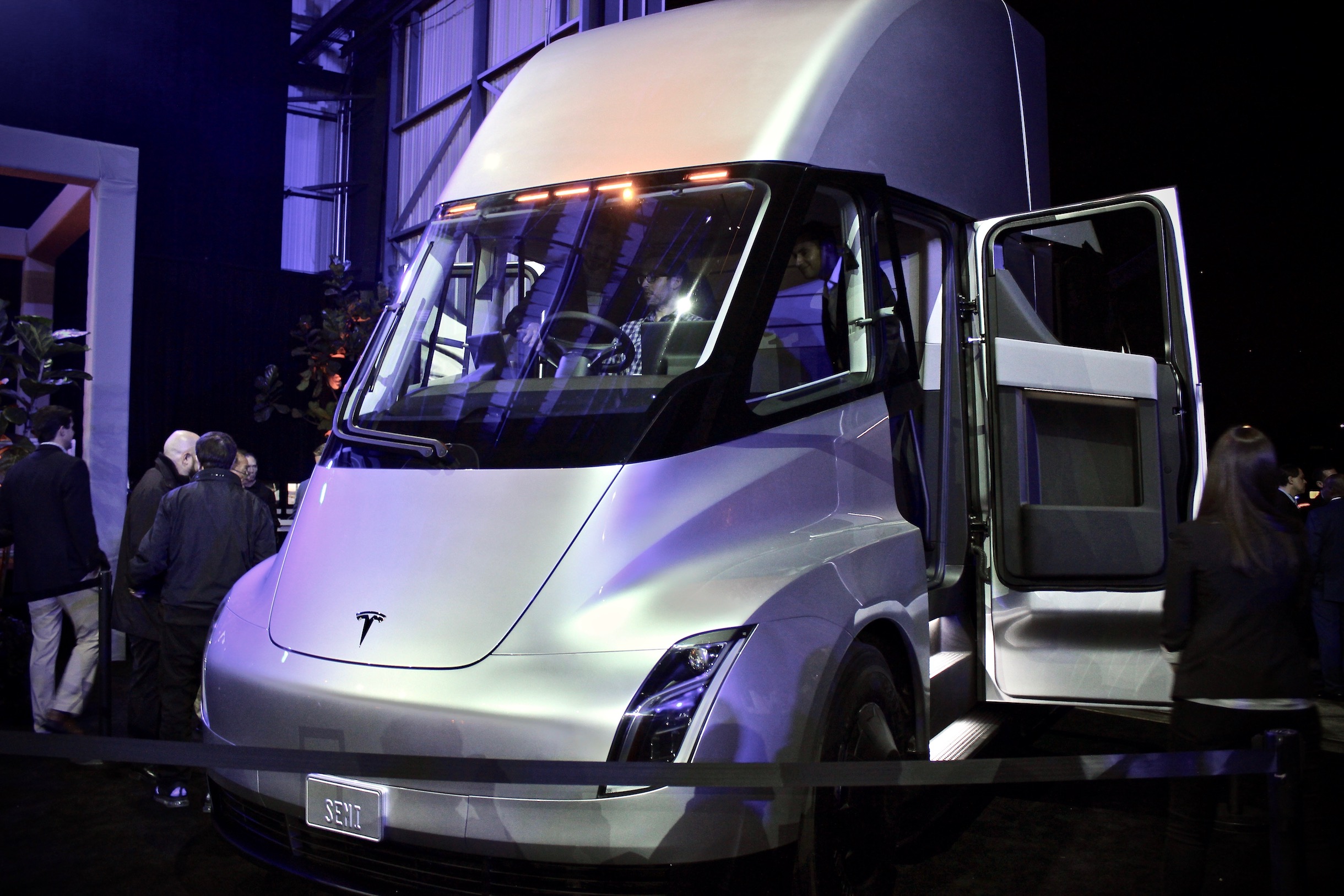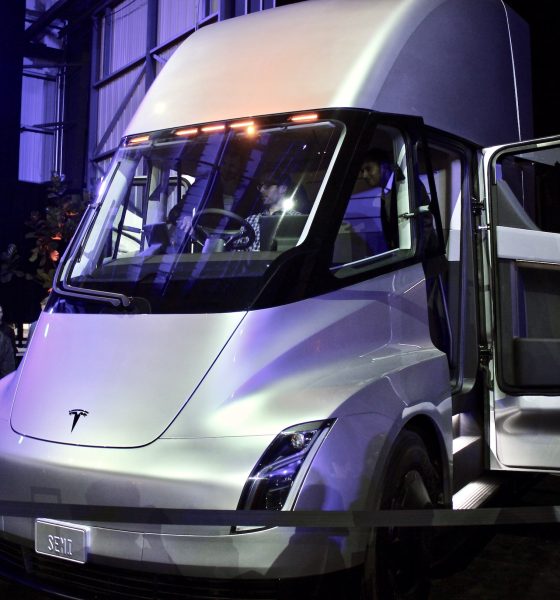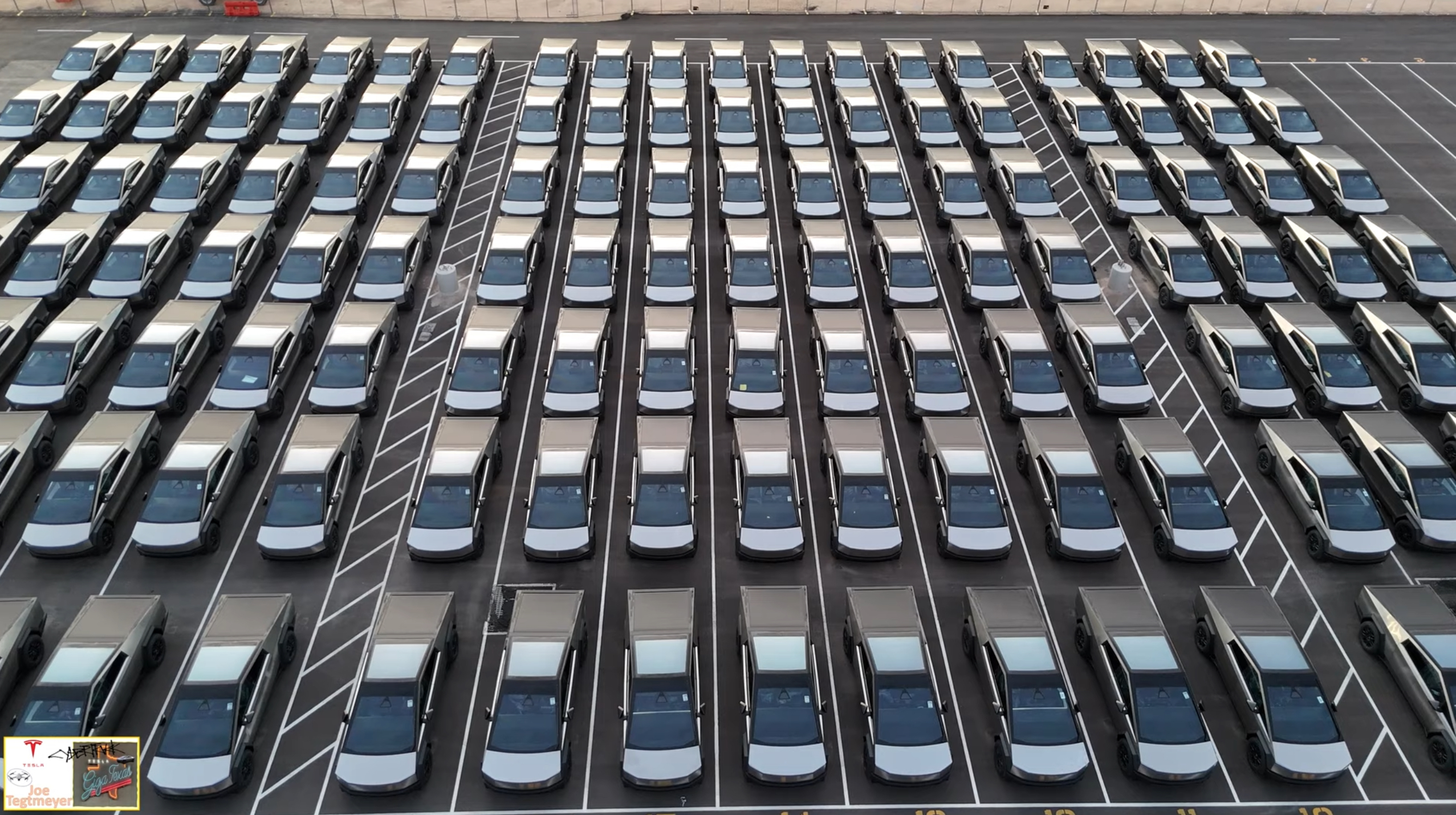

Investor's Corner
Trucking veteran Navistar looks to outnumber Tesla Semi by 2025
Trucking veteran Navistar International Corp. says it will launch more electric trucks on the roads than Tesla by 2025. In a statement to Trucks.com, Navistar CEO Troy Clarke declared that his firm’s electric trucks would outnumber the Tesla Semi on the roads, and cites the company’s experience as reason for its future success.
In a lot of ways, Clarke’s words towards its Elon Musk-led rival are not empty. Navistar, after all, commands a pretty large part of the trucking industry, with the brand holding 11 percent of the market in the Class 8 segment, the heaviest weight classification in the business. According to the Navistar CEO, it would be quite easy for the trucking veteran to eclipse the Tesla Semi because the firm has a lot of experience and a solid, proven reputation.
“Customers know us, and they know that when we give them a truck, it gives them a guarantee that this truck is going to serve their needs, because we understand how our customers make money.”
Quite interestingly, Navistar, just like Tesla, has not started manufacturing its electric big rigs yet. The CEO did state, however, that the veteran firm’s electric truck will be ready for a roll-out sometime in late 2019 or early 2020.
In order to bring its electric truck to life, Navistar would be collaborating with Volkswagen Truck & Bus, which is also an established, formidable presence in the long-haul industry. VW Truck & Bus currently owns 17 percent of Navistar, which allows both firms to work together on vehicle development and design, from the exterior to the motors of the upcoming truck.
While it seems quite ironic to see Navistar, which does not have an electric truck yet, challenge the Tesla Semi, Stephens Inc. transport analyst Brad Delco believes that the veteran truckmaker is well grounded in its declaration. According to the analyst, it all comes down to dealerships and service centers available to customers — something that Tesla is still in the process of achieving.
“(Navistar) has an established network of dealers nationwide to service the product… With established brands such as International, Peterbilt, Kenworth, and Freightliner, if something goes astray, those trucks get pulled into their dealerships to get fixed immediately, particularly when under warranty.”
Despite these reservations, however, Tesla continues to grow at a rate that is nigh-unprecedented in the auto industry. UPS has recently become the largest Tesla Semi customer to date, putting in 125 pre-orders and joining other large fleet owners such as PepsiCo, J.B. Hunt, Anheuser-Busch, Walmart, and Sysco with semi-truck reservations.
While Tesla might not have the infrastructure to rival legacy trucking firms such as Navistar head-on currently, the California-based electric carmaker has the advantage of momentum. Thus, it might only be a matter of time before Tesla catches up to the most formidable brands in the auto industry.
Apart from this, the Tesla Semi is also designed with quality and durability in mind, with CEO Elon Musk emphasizing that the massive vehicles would come with a 1 million-mile warranty. Coupled with a drivetrain that’s powered by four electric motors and Tesla’s formidable software suite that will allow for Convoy Mode, the Silicon Valley-based carmaker’s lack of facilities across the nation might ultimately end up as a non-issue.

Investor's Corner
Tesla gets bold Robotaxi prediction from Wall Street firm
Last week, Andrew Percoco took over Tesla analysis for Morgan Stanley from Adam Jonas, who covered the stock for years. Percoco seems to be less optimistic and bullish on Tesla shares, while still being fair and balanced in his analysis.

Tesla (NASDAQ: TSLA) received a bold Robotaxi prediction from Morgan Stanley, which anticipates a dramatic increase in the size of the company’s autonomous ride-hailing suite in the coming years.
Last week, Andrew Percoco took over Tesla analysis for Morgan Stanley from Adam Jonas, who covered the stock for years. Percoco seems to be less optimistic and bullish on Tesla shares, while still being fair and balanced in his analysis.
Percoco dug into the Robotaxi fleet and its expansion in the coming years in his latest note, released on Tuesday. The firm expects Tesla to increase the Robotaxi fleet size to 1,000 vehicles in 2026. However, that’s small-scale compared to what they expect from Tesla in a decade.
Tesla expands Robotaxi app access once again, this time on a global scale
By 2035, Morgan Stanley believes there will be one million Robotaxis on the road across multiple cities, a major jump and a considerable fleet size. We assume this means the fleet of vehicles Tesla will operate internally, and not including passenger-owned vehicles that could be added through software updates.
He also listed three specific catalysts that investors should pay attention to, as these will represent the company being on track to achieve its Robotaxi dreams:
- Opening Robotaxi to the public without a Safety Monitor. Timing is unclear, but it appears that Tesla is getting closer by the day.
- Improvement in safety metrics without the Safety Monitor. Tesla’s ability to improve its safety metrics as it scales miles driven without the Safety Monitor is imperative as it looks to scale in new states and cities in 2026.
- Cybercab start of production, targeted for April 2026. Tesla’s Cybercab is a purpose-built vehicle (no steering wheel or pedals, only two seats) that is expected to be produced through its state-of-the-art unboxed manufacturing process, offering further cost reductions and thus accelerating adoption over time.
Robotaxi stands to be one of Tesla’s most significant revenue contributors, especially as the company plans to continue expanding its ride-hailing service across the world in the coming years.
Its current deployment strategy is controlled and conservative to avoid any drastic and potentially program-ruining incidents.
So far, the program, which is active in Austin and the California Bay Area, has been widely successful.
Investor's Corner
Tesla analyst realizes one big thing about the stock: deliveries are losing importance

Tesla analyst Dan Levy of Barclays realized one big thing about the stock moving into 2026: vehicle deliveries are losing importance.
As a new era of Tesla seems to be on the horizon, the concern about vehicle deliveries and annual growth seems to be fading, at least according to many investors.
Even CEO Elon Musk has implied at times that the automotive side, as a whole, will only make up a small percentage of Tesla’s total valuation, as Optimus and AI begin to shine with importance.
He said in April:
“The future of the company is fundamentally based on large-scale autonomous cars and large-scale and large volume, vast numbers of autonomous humanoid robots.”
Almost all of Tesla’s value long-term will be from AI & robots, both vehicle & humanoid
— Elon Musk (@elonmusk) September 11, 2023
Levy wrote in a note to investors that Tesla’s Q4 delivery figures “likely won’t matter for the stock.” Barclays said in the note that it expects deliveries to be “soft” for the quarter.
In years past, Tesla analysts, investors, and fans were focused on automotive growth.
Cars were truly the biggest thing the stock had to offer: Tesla was a growing automotive company with a lot of prowess in AI and software, but deliveries held the most impact, along with vehicle pricing. These types of things had huge impacts on the stock years ago.
In fact, several large swings occurred because of Tesla either beating or missing delivery estimates:
- January 3, 2022: +13.53%, record deliveries at the time
- January 3, 2023: -12.24%, missed deliveries
- July 2, 2024: +10.20%, beat delivery expectations
- October 3, 2022: -8.61%, sharp miss due to Shanghai factory shutdown
- July 2, 2020: +7.95%, topped low COVID-era expectations with sizeable beat on deliveries
It has become more apparent over the past few quarters that delivery estimates have significantly less focus from investors, who are instead looking for progress in AI, Optimus, Cybercab, and other projects.
These things are the future of the company, and although Tesla will always sell cars, the stock is more impacted by the software the vehicle is running, and not necessarily the vehicle itself.
Investor's Corner
SpaceX IPO is coming, CEO Elon Musk confirms
However, it appears Musk is ready for SpaceX to go public, as Ars Technica Senior Space Editor Eric Berger wrote an op-ed that indicated he thought SpaceX would go public soon. Musk replied, basically confirming it.

Elon Musk confirmed through a post on X that a SpaceX initial public offering (IPO) is on the way after hinting at it several times earlier this year.
It also comes one day after Bloomberg reported that SpaceX was aiming for a valuation of $1.5 trillion, adding that it wanted to raise $30 billion.
Musk has been transparent for most of the year that he wanted to try to figure out a way to get Tesla shareholders to invest in SpaceX, giving them access to the stock.
He has also recognized the issues of having a public stock, like litigation exposure, quarterly reporting pressures, and other inconveniences.
However, it appears Musk is ready for SpaceX to go public, as Ars Technica Senior Space Editor Eric Berger wrote an op-ed that indicated he thought SpaceX would go public soon.
Musk replied, basically confirming it:
As usual, Eric is accurate
— Elon Musk (@elonmusk) December 10, 2025
Berger believes the IPO would help support the need for $30 billion or more in capital needed to fund AI integration projects, such as space-based data centers and lunar satellite factories. Musk confirmed recently that SpaceX “will be doing” data centers in orbit.
AI appears to be a “key part” of SpaceX getting to Musk, Berger also wrote. When writing about whether or not Optimus is a viable project and product for the company, he says that none of that matters. Musk thinks it is, and that’s all that matters.
It seems like Musk has certainly mulled something this big for a very long time, and the idea of taking SpaceX public is not just likely; it is necessary for the company to get to Mars.
The details of when SpaceX will finally hit that public status are not known. Many of the reports that came out over the past few days indicate it would happen in 2026, so sooner rather than later.
But there are a lot of things on Musk’s plate early next year, especially with Cybercab production, the potential launch of Unsupervised Full Self-Driving, and the Roadster unveiling, all planned for Q1.








